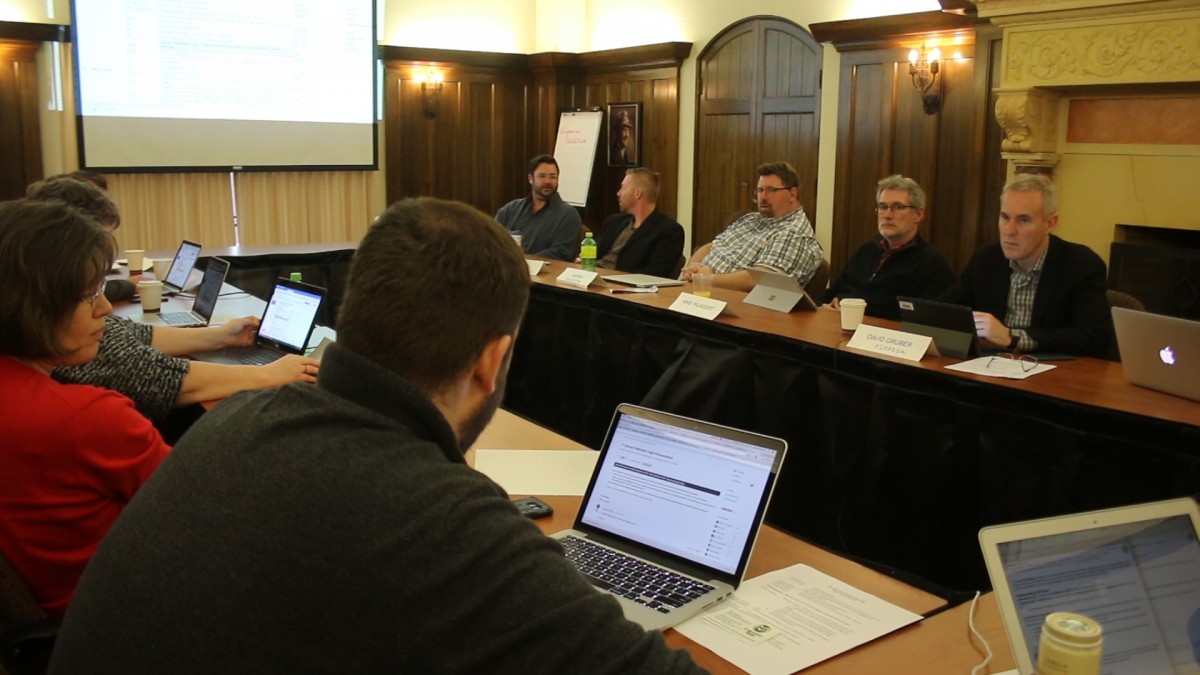Reading Between the Lines
Institutions are changing the way they think about content creation and how content is used within a course. To that end, course design is becoming a collaborative effort on the part of faculty, instructional designers, librarians, and learning analytics experts. Our member schools have individually invested countless hours and hundreds of thousands of dollars in improving this process and its outcomes. Together with these thought leaders, Unizin is developing a content authoring framework and tools that can support the diverse needs of each campus while unifying and standardizing the course creation and design process for universities everywhere.
Task Force Requirements
In the early months of Unizin, two task forces were assigned with developing a set of use-cases and requirements for what was then called the Content Relay. They included the ability to:
- Launch the tool from the Rich Text Editor toolbar within the Learning Management System (LMS)
- Discover content
- Preview content
- Add links to content
So Unizin set off to build a set of complementary prototypes that included the initial components as listed by the task force.
The Prototypes
The initial Content Relay prototypes were Unizin Discover and Unizin Contribute. A group of early adopters from seven schools agreed to evaluate the tools and provide feedback. At first the group was skeptical and we could really sense the confusion and trepidation in our initial conversations. Then as they finally got their hands on the prototypes, confusion turned to frustration. We could see it in their emails and hear it in their voices as they dealt with the unfamiliar processes, bugs, and errors of the prototypes. The Unizin team stayed in constant communication and conducted dozens of interviews during and after the program. Eventually, a pattern emerged and the next steps materialized.
Changing Course
We learned that there were many areas for improvement. Many early adopters preferred to discover content outside of the LMS environment. The way the process was structured was not native to the users. Even the name, Content Relay, caused confusion. We realized the problems we were trying to solve were out of context. We had built the right core technology, but we weren’t delivering it where and when users needed it. Through the Early Adopter Program (EAP), we learned more about the early adopters’ existing efforts and needs:
- Institutions were already dedicating resources and personnel to this process, including:new services for libraries; advising on Open Educational Resources (OER); and data from students’ use of materials.
- There is a need for cloud-based infrastructure that supports a peer-review workflow. The infrastructure must support a diverse set of instructional materials and maintain versions of the content.
- Affordability is paramount.
Content Authoring Tools
It became essential to restructure our solution and make it available in a place where end users would find it most beneficial. We developed a blueprint for a suite of tools that will assist various personnel with their roles in the content authoring, delivery, and discovery process. A new task force was also formed to develop a content authoring framework that could accelerate institutional OER textbook production and enable consortium-wide collaboration of OER textbook production.
What We Learned
- Common Needs. We were surprised to find how consistent the needs were across our institutions. We had been anticipating more diversity in the requirements since each campus has unique ways of approaching the course development process. However, we learned that while there are varieties, our content authoring vision would largely fit the needs of universities.
- Immersion Leads to True Understanding. The beginning of any qualitative research process is overwhelming because there is a firehose of data coming from many individuals. When you take a closer look, you start getting caught up in the idiosyncrasies of each person and their everyday practices. You think the solution will never emerge because there is too much diversity. But with patience and trust in the process we were able to jump in the deep end, immerse ourselves in the research and gain a better understanding of the common practices at our Member institutions.
The Next Chapter
While the content authoring tool suite is still in development, it will address the needs of emerging instructional methods at universities and address the structure and scaling efforts in line with Unizin’s vision. Working with early adopters is one of the most valuable ways Unizin collaborates with its Members. Through these efforts, we’re ensuring that our end-users are integrated into the design process. We believe Unizin solutions should fit our Members immediate needs as well as their long-term content strategies. We’re proud to have great relationships with all of our Member schools and are committed to working with our institutions and maintaining a feedback loop that continuously improves and informs Unizin solutions.

